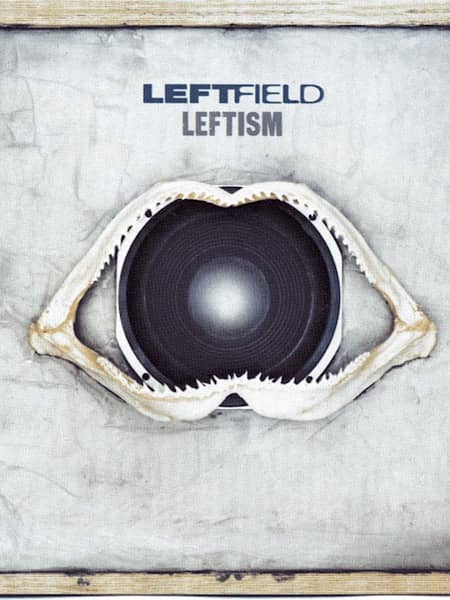Leftfield were built to last. Twenty years after their colossal debut Leftism landed in the middle of Britpop like an anvil dropped from a tower block, the seminal UK dance group returned with an invigorating third album, 2015's Alternative Light Source.
This new set of electronic battle weapons, their first since 1999’s Rhythm And Stealth, found mainman Neil Barnes alone at the controls – longtime partner Paul Daley departed to explore other avenues – though Barnes’ ability to construct punishing, big-room techno has not diminished over time.
Meanwhile, May 2017 saw a reissue of Leftism with remixes from Skream, Adrian Sherwood, Zomby, Peverelist and more, proving their sound remains just as relevant today as it did back in the 1990s. You don't have to look long and hard at today's music scene to spy Leftfield's fingerprints – here are five ways they changed the game and invented modern dance music as we know it.
1. They made dance music that worked in an album format
Before 1995’s Leftism, Barnes and Daley were two blokes who’d spent six years working London’s acid house and sound system circuit with a string of sci-fi dub cuts and booming remixes. Picked up by Columbia, Leftism rounded up the duo’s eco-conscious, feel-good singles on a CD-length album that immediately chimed with an audience – and, crucially, a student population – who went raving every weekend and wanted more from dance music than odd white labels and one-off chart-toppers.
This was a new era of mid-90s superclubs like Cream and Ministry of Sound, and club culture and its weekend leisure lifestyle were becoming big business. Straddling the worlds of Megadog, Spiral Tribe and big beat with a spliffed-up "one love, one world" positivity, Leftism was a night out in one record that anyone could enjoy. This ultimate '90s dance album was also the ideal chill-out soundtrack after a session at, say, Back to Basics and paved the way for the likes of The Chemical Brothers’ Exit Planet Dust.
2. The ‘celebrity vocalist on a dance track’ was their idea
Having a famous name guest on a full-throttle pumper is commonplace these days, but it wasn’t in 1993. Leftfield’s incendiary collaboration with John Lydon for Open Up – “Burn Hollywood burn, taking down Tinseltown”, sneered the PiL frontman – smuggled the production duo into the charts, reaching No 13 in the UK, and set a template for numerous faceless techno acts to follow. Afrika Bambaataa and Roots Manuva duly appeared on Leftfield’s second record, while this new one features Poliça’s Channy Leaneagh, Tunde Adebimpe from TV On the Radio and the fella from Sleaford Mods, fresh from his stint with those other '90s ravers the Prodigy, on a perky number called Head And Shoulders.
3. They brought dub to the dancefloor
Like their contemporaries Massive Attack, a thick undercurrent of dub tends to course through everything Leftfield do, from Afro-Left and Space Shanty to Afrika Shox and Phat Planet (that grumbling riff used in Guinness’s famous 'Surfers' ad), as if Neil Barnes and Paul Daley, both drummers, built their tracks from the bottom up on a solid foundation of bass.
Rooted in dub and reggae culture but happy to incorporate elements of chugging soundsystem techno, progressive house and trance euphoria, Leftfield’s was a very British sound that was equally at home on the beaches of Goa as the student unions of redbrick universities.
4. But now it’s more about techno
Shorn of the shaggy low-end and skanking dub, Alternative Light Source is a far sleeker affair than we’re used to hearing from Leftfield, most likely because this is now effectively a solo vehicle for Barnes, who resurrected the brand in 2010 after eight years in the wilderness, keen to hit the lucrative comeback trail as a DJ and live act.
More of an electro fan than Daley, who’d brought the funk, Barnes guides Leftfield over appealingly rugged Euro techno (Little Fish and Universal Everything, recently remixed by Audion and Legowelt) and a few dubstep-derived cuts that retain that essential Leftfield murkiness. It’s sure to please old fans and might even win some younger admirers.
5. Live, they’re loud
How loud? Oh, very. In June 1996, Leftfield played an all-nighter at Brixton Academy and their soundsystem sent shockwaves through the venue, causing cracks to appear in the roof and plaster to fall on the punters below.
Not to be outdone, in December 2010 at the same venue, it’s believed Leftfield repeated the trick, with plaster tumbling from the Academy’s rattling fixtures overhead. So if you’re going to see them live, bring earplugs – and a hard hat.
Check out more great premieres, stories and videos at RedBull.com/Music
Like Red Bull Music on Facebook and follow Red Bull UK on Twitter at @RedBullUK




